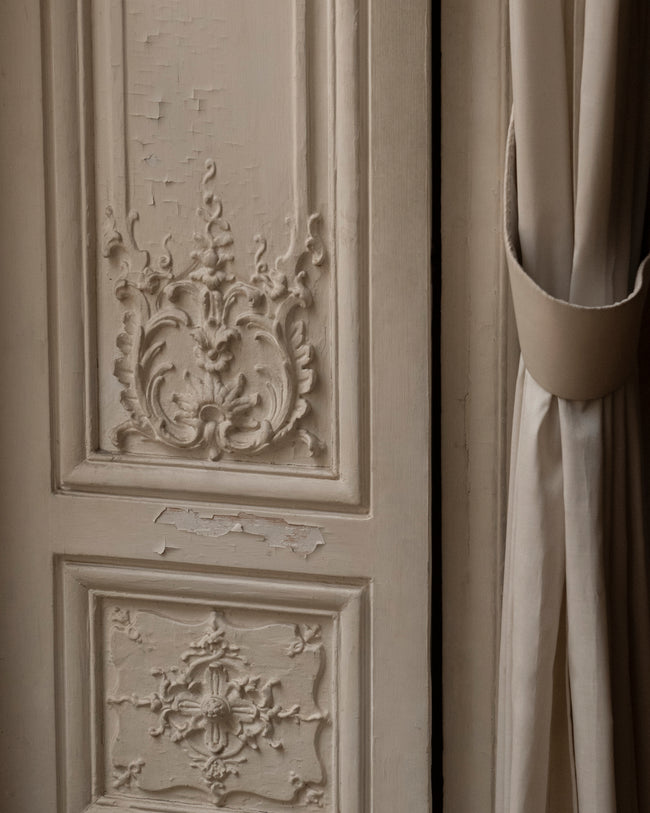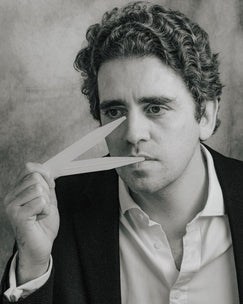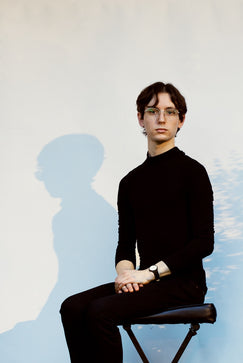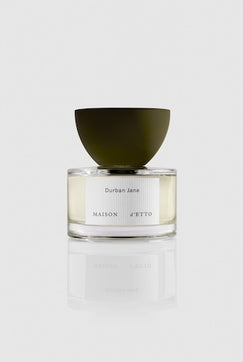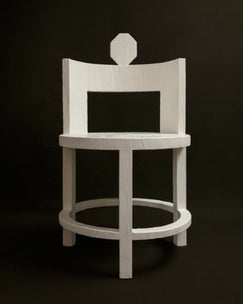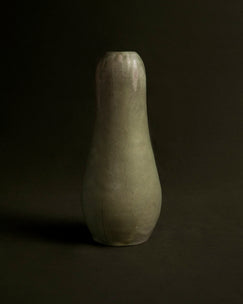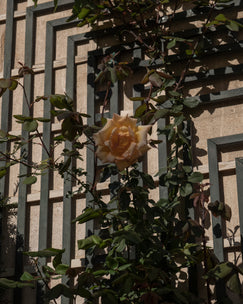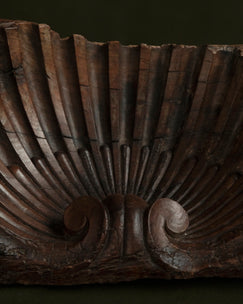Engaging with children who had impaired vision or blindness at her primary school, she turned to the olfactory world to share experiences and stimulate play. Morocco was another childhood home, and here Celine developed her taste for adventure, tribal cultures and exoticism. These early influences led her to “find beauty in harmonious imperfection,” and the world of dreams, imagination and stories.
M d. E What fragrance did you create for MAISON d’ETTO and why?
Canaan and Durban Jane. Those two fragrances were really inspired by the personality and experiences the founder, Brianna had with the horses which served as our muse for each fragrance.
With Canaan, the challenge was to create a perfectly unisex, tuberose-based fragrance. Tuberose is probably the most polarizing of the white flowers due to its very strong and contrasted olfactive personality: solar, green, floral, creamy, nearly coconut-like, with spicy clove, but also some inherent darker sides like animalic, medicinal, and even mothballs notes. You have to take it as the whole. Traditionally, fragrances showcasing tuberose are soliflore. Meaning all about tuberose (Fracas, Poison, and Carnal Flower). With Canaan, on the contrary, I wanted to create an iconoclastic fragrance that would allow Maison d’Etto to bring modernity to the market by offering an incremental tuberose-based fragrance, and unapologetically unisex. Tuberose had to share the screen with another flamboyant ingredient, Oud. How to marry what was the most feminine-related flower in perfumery to the most roaring masculine symbol in woody notes? By creating what I call ‘olfactive bridges’ using the camphoraceous, green, earthy, honey, and animalic facets of the flower to marry harmoniously with Oud, which naturally also has such facets. The result is a bold, sexy, uber luxurious, and ultra powerful fragrance for whatever gender—It truly works on everyone.
With Durban Jane, it was all about evoking a deep connection to self, comfort, and internal peace. I worked around three luxurious and comfy ingredients: ambrette seed oil, orris concrete, and sandalwood oil, while using only the most exquisite qualities in order to fully showcase the idea of a nuzzly cocoon. There is also a hint of vibrant nuttiness, which brings modernity and unexpected addiction. I was inspired by visiting the horse in its box, by its blanket, and the hay. There was a marvelous sense of quietness before or after the race. It was one of those first days in November, in upstate New York, when the air in the morning is crisp and there is a bit of fog. The fragrance is extremely long-lasting, the scent lingers on your pullover for weeks!
M d. E You are originally from Grasse, France. It would seem you were destined to be a perfumer! When did the ultimate realization happen? What was your path?
I spent twenty marvelous years growing up there. One could not escape the smells of the city, since the numerous factories were very active until the mid 90’s and the city’s heart was beating to the rhythm of the arrival of raw materials. It happened quite organically, since I was a child, I wanted to work in the fragrance world! I was not a scientist at all, and I was attracted first by the visual incarnation of the fragrances in the advertising campaigns: the bottle, the dress, the couture look, the tagline, and the photography. I went to business school, but found myself homesick so I went back to Grasse and interned at Mane where I finally discovered the olfactive side of the industry, working closely with perfumers and evaluators. I became obsessed by getting to know raw materials. During my years studying, I also succeeded in interning at some of the most inspiring French brands: Chanel, Dior and Louis Vuitton. I was able to gain a full understanding of the fragrance, from its olfactive creation to its marketing and commercial launch. One of the strongest success factors is a brand’s ability to translate and share its universe with customers.
M d. E What is your process in creating a fragrance?
I am very visual. First I have to see the fragrance in my mind, I am very receptive to synesthesia. I see the fragrance in terms of colors, textures, shapes, and even sounds sometimes. Then I am tactile, I need to translate what I see on paper and use a pencil. I draw what I call an ‘olfactive system.’ I define what will be the Sun, meaning the hero ingredient of the composition, and then the different galaxies and their planets, big or small, it matters. For example, the floral galaxy will have the planet tuberose, the planet orange flower, etc. Then I build ‘olfactive bridges’ which make up the link between those galaxies. If you see my desk, you would find it messy! I keep all of the sheets because whenever I need to see the full picture of my formula, particularly when I am stuck, or something is not harmonious, or there is a bridge not working, or the formula becomes too complicated and needs rationalization. I go back to my first sketch.
M d. E What moves you about scent?
I like the fact that scents are invisible and therefore mysterious. The fact that they come from our reptilian part of the brain, the most instinctive, animalistic, not so tamed, and intuitive. I also like that they have no boundaries, you can’t control where they go, they are free to wander, and they can have a great impact on you. Just like a dream.
M d. E Who were your biggest mentors and what did you learn from them?
My mentor was the late Pierre Wargny. He created some of the most iconic masculine fragrances including Drakkar Noir or YSL l’Homme. He was famous for creating very “macho” fragrances, meaning bold, memorable, masculine, and very mega powerful. He formulated as if he was composing a symphony. He taught me to create ‘echo’ in a fragrance. Raw materials have to resonate well together and their ‘sound’ or ‘smell’ has to be able to last throughout the volatility spectrum, relying on each other with musical bridges.
M d. E What was your first scent memory or what scent evokes the strongest memory for you?
My mother’s fragrance, Van Cleef & Arpels First. And Grasse. Depending on the day, the smell of the city could be pleasant, if factories were distilling ingredients like patchouli and vetiver, but sometimes they were preparing flavors, and it could be a gigantic stench wrapping the whole city.
M d. E What fragrance do you wear?
I can’t wear fragrances during the week because of my job and in the evening I am wearing my trials for evaluation. I need to follow the evaporation curve to understand what is going on in my formula.
During the weekend, I like to wear market fragrances to study them. When I am going out or in a social setting, I wear some of the fragrances I have created (Durban Jane and Canaan are in my mix of course). So in reality, I don’t have much time to wear what I truly like. I wear Versace Blonde, a discontinued fragrance that I religiously keep in my fridge to avoid oxidation. A bold super sexy white floral.
M d. E What is your favorite and least favorite scent?
I don’t like wearing fruity fragrances. I lean towards big qualitative florals or orientals. I also like woody fragrances.
M d. E Where are you from and where do you live now? Where do you dream of traveling?
I am from Grasse, but I spent 22 years abroad. When I was a child my family was in between Grasse and Morocco, and Spain for vacations where we have a house. Later, I worked in England, Italy, the Netherlands and 15 years in NYC. I just relocated to France, where I am working between Grasse and Paris, between the olfaction and the fashion, the fields and the salons, the sensual and the intellectual.
M d. E What is your biggest fear?
Losing my loved ones. Otherwise, I tend to be inspired by a quote from F.D. Roosevelt that I saw walking around in Washington, D.C. “ The only thing we have to fear…is fear itself.” I think Fear is one of the greatest poisons of humanity.
M d. E Who or what inspires you? Favorite artists or designers?
I am an esthete and an unapologetically romantic, in the XIXth century sense, and hyper sensorial, meaning I use all my senses to the max. As an avid reader, I have a beautiful collection of books made of novels, poetry, historical and political books, but also Beaux Arts books. I love photography and taking classes helps me compose my formulas, enabling me to choose what I want to showcase. Hence, I have very eclectic tastes.
My first source of inspiration, though, is Nature. It always surprises me, and growing up around the Mediterranean shores has been very nurturing. The American West and its big spaces are one of my favorite playgrounds too. I love road trips. Or hiking. It is all about ‘feeling’ and it is a fertile moment to have olfactive visions.
On the total opposite, I am also mesmerized by the architectural marvels built across the centuries: India, Japan, Russia, Europe, Maghreb, and Uzbekistan are cities with incredible architectural treasures. So traveling is, of course, a huge part of my inspiration and I always manage to discover countries in an ‘off the beaten track’ way. I am a true adventurer. I don’t like the obvious, the common, and I even go for some calculated risks sometimes during my trips.
Today, there is no mystery regarding interior design or clothes. Everything is labeled, branded, and over communicated. That’s why I love people like Loulou de la Falaise, Talitha Getty, Mick Jagger, and Kate Moss — there is an irreverence and a singularity in their style, and they are all incredibly alluring in their own way without wearing logos. I like the extravagance of Daphne Guinness. Nowadays, when you observe decorative or fashion magazines, they all advertise the same things, personal interiors are starting to look like hotel rooms! I prefer flea markets, vintage shops, and auction houses where things are unique and mixed.
With this pandemic, though, and the restricted opportunity to travel, I discovered a new place of inspiration and this one is truly infinite: the otherworldliness we all have within ourselves. You just need to find it and act upon it.
M d. E What’s next for you?
Moving to IFF France, between Paris and Grasse, has allowed me to focus on developing our new olfactive residence called ‘L’Atelier du Parfumeur IFF,’ a unique place, entirely dedicated to fragrance creation and production ‘made in Grasse.’ Grasse is the historical cradle of modern perfumery, with a unique savoir-faire regarding all the ‘métiers’ of perfumery due to its highly valued craftsmanship. The opportunity to have direct access to the fields of flowers and aromatic plants in the surroundings of the city is also very unique. For all those reasons, Grasse has again found its luster, and its rebirth is highly coveted by the brands, especially to conquer new markets or satisfy a demanding clientele searching for heritage, authenticity, and high quality. I am extremely honored and beyond thrilled to have been given this challenge.
